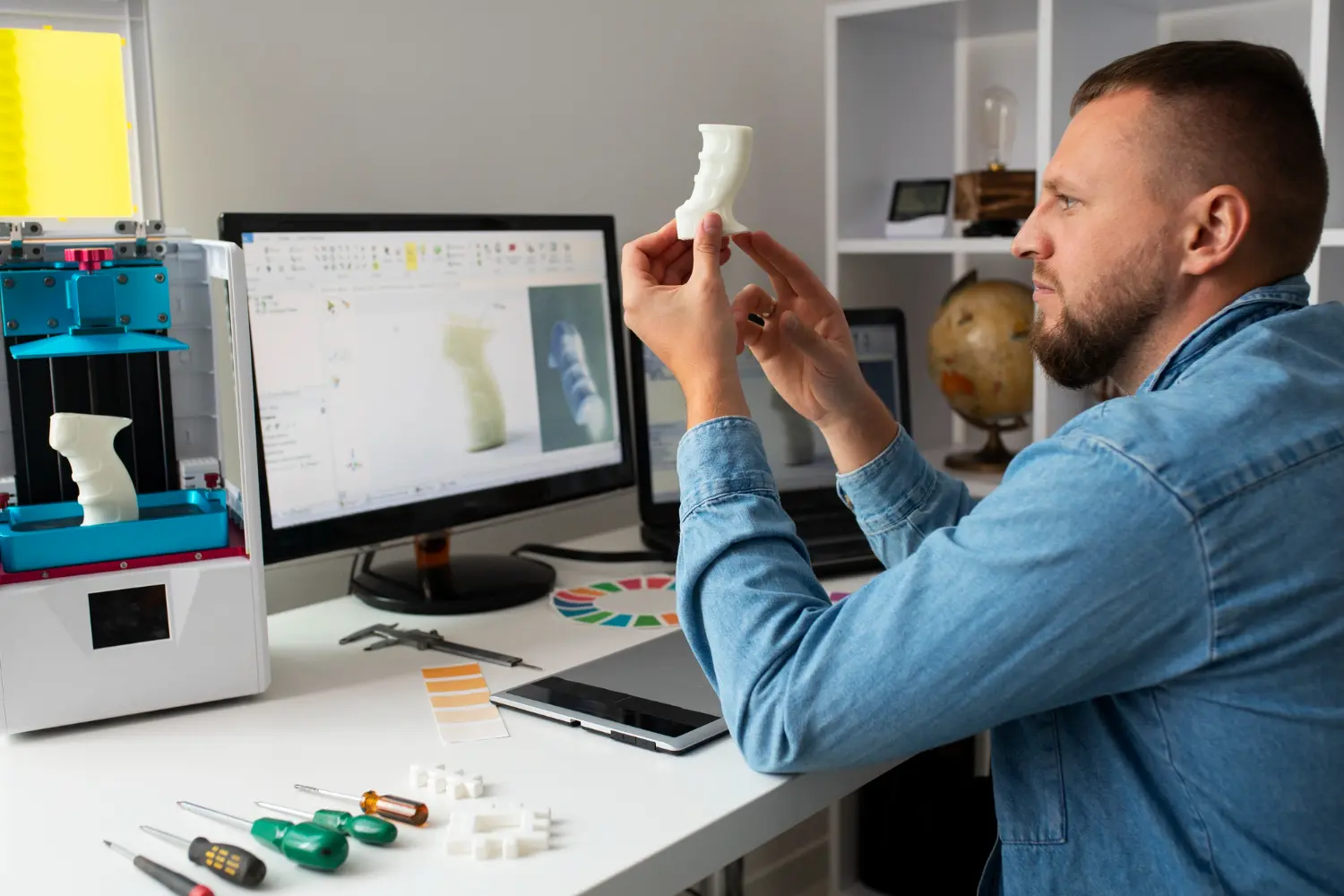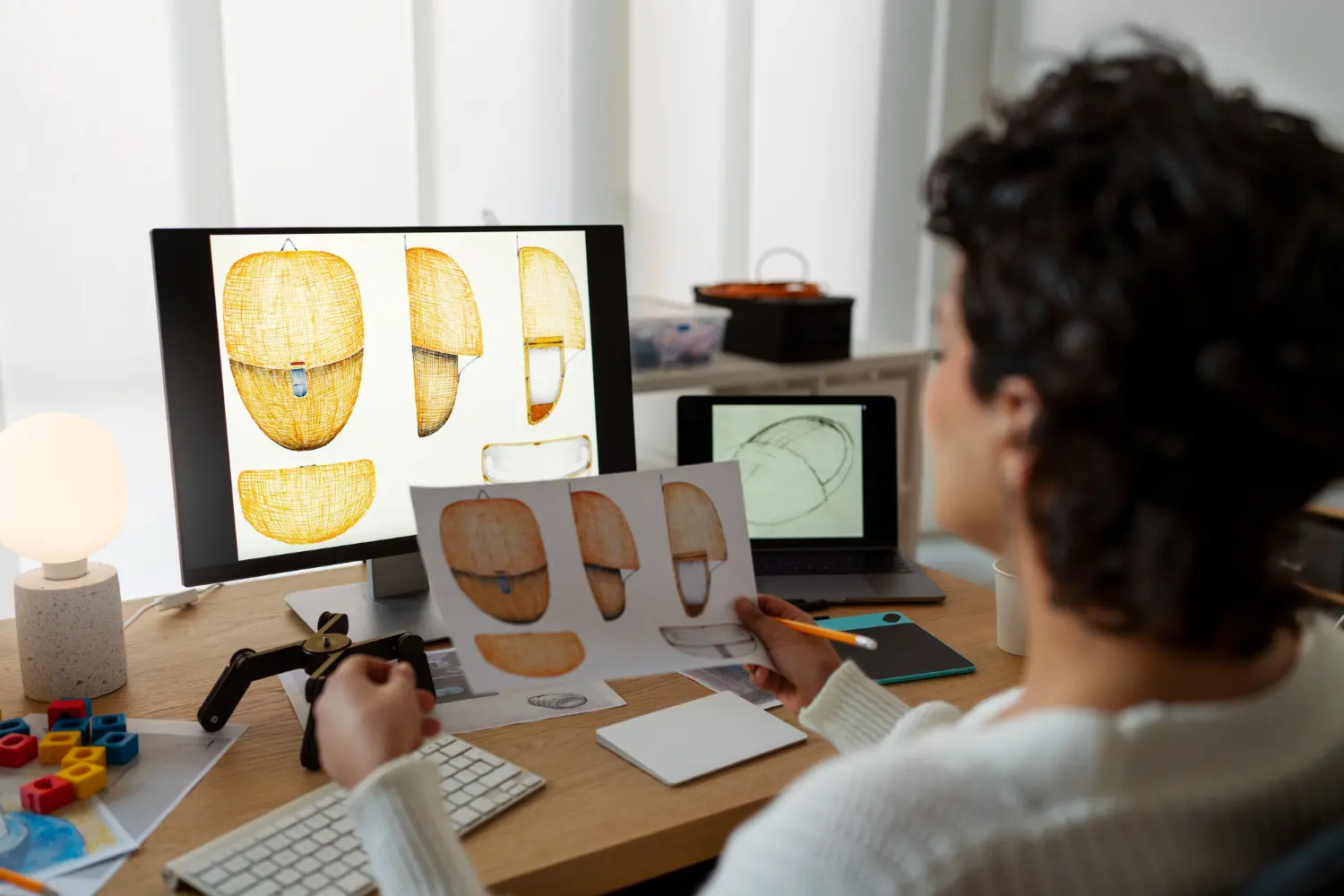Businesses need effective methods to showcase their products in the digital marketplace. 3D product rendering offers a solution by creating detailed, lifelike images using computer-generated imagery (CGI). This method allows companies to show products from various angles and in different settings without needing physical prototypes. By providing a dynamic and versatile approach, 3D product rendering is transforming industries such as e-commerce, marketing, and manufacturing. It enables cost-effective and visually compelling product presentations that can significantly enhance customer engagement and streamline marketing efforts.
What is 3D product rendering?
3D product rendering involves creating detailed images from three-dimensional models using specialized software. These images can be made to look any specific style, depending on whatever the project needs. This technique allows businesses to visualize their products in a virtual environment before physical production begins, offering a practical solution for various industries.
One of the primary benefits of 3D product rendering is its capability to showcase a product in various product configurations, colors, and environments. For instance, a single product model can be rendered from different angles, under various lighting conditions, and with different textures. This flexibility enables a comprehensive visual representation that would be challenging to achieve with traditional photography. As a result, 3D product rendering has become a key tool in marketing and product development, assisting businesses to create better communication materials.
How 3D product rendering works
The product rendering process involves several steps, each critical to creating a detailed and accurate visual representation of a product. Understanding these stages can help businesses appreciate the technical skill and creative expertise required to produce high-quality renders.
-
The first step in the product rendering process is modeling. A 3D designer creates a digital visual representation of the product using specialized software. The model can be built anew or based on existing CAD data. Precision and attention to detail are crucial in this stage to ensure the final render looks as realistic as possible, capturing the essential features of the product.

-
After modeling, the next stage is texturing. This process involves outfitting the model with different colors, materials, and surface details. Textures can be as simple as solid colors, or as complex as materials that mimic real surfaces like metal, wood, or fabric. Good texturing is key to making the model look realistic and dynamic, especially in different lighting.
-
Lighting is crucial in making the product render look real. It involves placing lights to simulate real-world conditions, which adds depth and realism to the model. Different types of lights, like spotlights or ambient lights, are used to get the desired effect. The quality of lighting significantly influences the fidelity of the final render, making it a key focus area in the product rendering process.
-
Once the model is textured and lit, the rendering stage begins. Rendering uses software to preview how light affects the model, creating a 2D image from the 3D scene. It can take time, especially for high-quality renders, but the detailed and realistic results make it worth the effort.
-
The last stage is post-production, where the rendered images are touched up. This can include adjusting colors, adding effects like motion blur, and combining multiple images. Post-production ensures that the final visuals are flawless and ready for use in marketing materials, online platforms, or other promotional efforts.
What are the benefits of product rendering?
3D product rendering offers numerous benefits, making it a powerful tool across various industries. Below are some of the biggest advantages of 3D product rendering:
Time-saving potential
3D product rendering can drastically reduce the time needed to create visual content. Unlike traditional photography, which requires physical prototypes and extensive studio setups, rendering is completed entirely within a virtual environment. This process allows for faster turnaround times, particularly when multiple product variations need to be visualized. Changes to designs can be made quickly without the need for new photo shoots, making the process more efficient for fast-moving businesses.
Cost efficiency
Product rendering costs are often lower than those associated with traditional photography. There's no need for expensive photo shoots, physical prototypes, or location rentals. After a model is created, it can be easily reused and changed, making it useful for evolving marketing campaigns. The ability to produce high-quality visuals without the logistical challenges of traditional methods allows businesses to allocate their budgets more strategically, often leading to better overall marketing outcomes and more efficient resource management.
Flexibility
The product rendering process offers unparalleled flexibility. Products can be visualized in any environment, from simple studio setups to complex outdoor scenes. Changes to the product design, color, or material can be made easily without the need to recreate the model from scratch. This flexibility allows businesses to adapt to new marketing needs and respond to market changes. Additionally, the ability to create multiple variations from a single model means businesses can cater to diverse consumer preferences without incurring significant additional costs.
Enhanced consumer engagement
Another significant benefit of 3D product rendering is the enhanced engagement it provides for consumers. Realistic product renders and interactive 3D models let customers explore products in detail, which helps them understand and appreciate the features better. This is especially useful in ecommerce, where customers can't physically interact with products before buying. By providing an immersive and interactive experience, 3D product rendering helps bridge this gap, increasing consumer confidence and potentially boosting sales by creating a more satisfying and informative shopping experience.
Industries leveraging 3D product rendering technology
3D product rendering is utilized across various industries due to its versatility and efficiency. Below are some key sectors where this technology plays a crucial role:
Online retailers use photorealistic product rendering to showcase products in detail, offering customers a virtual experience that closely mimics physical interaction. This is especially useful for products like furniture, electronics, and fashion items. As online shopping grows, presenting products accurately and attractively is more important than ever. 3D product rendering allows e-commerce platforms to provide detailed product views, including 360-degree rotations and zoomable images, significantly enhancing the online shopping experience and reducing the likelihood of returns due to unmet expectations.
3D product rendering helps manufacturers visualize prototypes and make design adjustments before committing to production. This process not only saves costs but also accelerates the development timeline. By visualizing the product in a virtual space, manufacturers can catch design flaws early, cutting down on expensive mistakes during production. Additionally, rendered images can be utilized in technical documentation, assembly instructions, and marketing materials, streamlining the workflow from design to market and improving overall operational efficiency.
Advertising agencies leverage 3D product rendering services to create compelling visual content for both digital and print campaigns. The ability to render products in any setting provides greater creative freedom and results in more impactful advertising. Whether it’s placing a product in an exotic location or creating a surreal environment that highlights its features, 3D product rendering offers endless possibilities for creative storytelling. This versatility makes it an invaluable tool for crafting unique and memorable campaigns that resonate with target audiences and deliver strong marketing results.
What factors impact the cost of 3D product rendering?
The cost of a product render can vary. Typically, factors like how complex the model is, the level of fidelity needed, and the experience of the rendering team will all affect the final price. Simple renders may start at a few hundred dollars, while more intricate projects can run into the thousands.
Other things like the number of views, animation needs, and post-production work also affect the final cost. Businesses should carefully consider these factors against the desired quality and potential return on investment when planning a rendering project. For companies that require regular updates to their visual content or need to develop a large volume of product imagery, investing in high-quality rendering services may offer significant long-term benefits. However, businesses with simpler needs might find more affordable options that still meet their quality standards.

Conclusion
3D product rendering offers a powerful and flexible way to visualize products, making it a valuable tool across industries such as e-commerce, manufacturing, and marketing. Understanding the product rendering process and its benefits helps businesses make better choices about how to showcase their products. Whether it’s saving time, reducing costs, or offering greater creative flexibility, 3D product rendering is increasingly becoming an essential component of modern business strategies. Reach out to us to see whether 3D product rendering is a good fit for your business.





